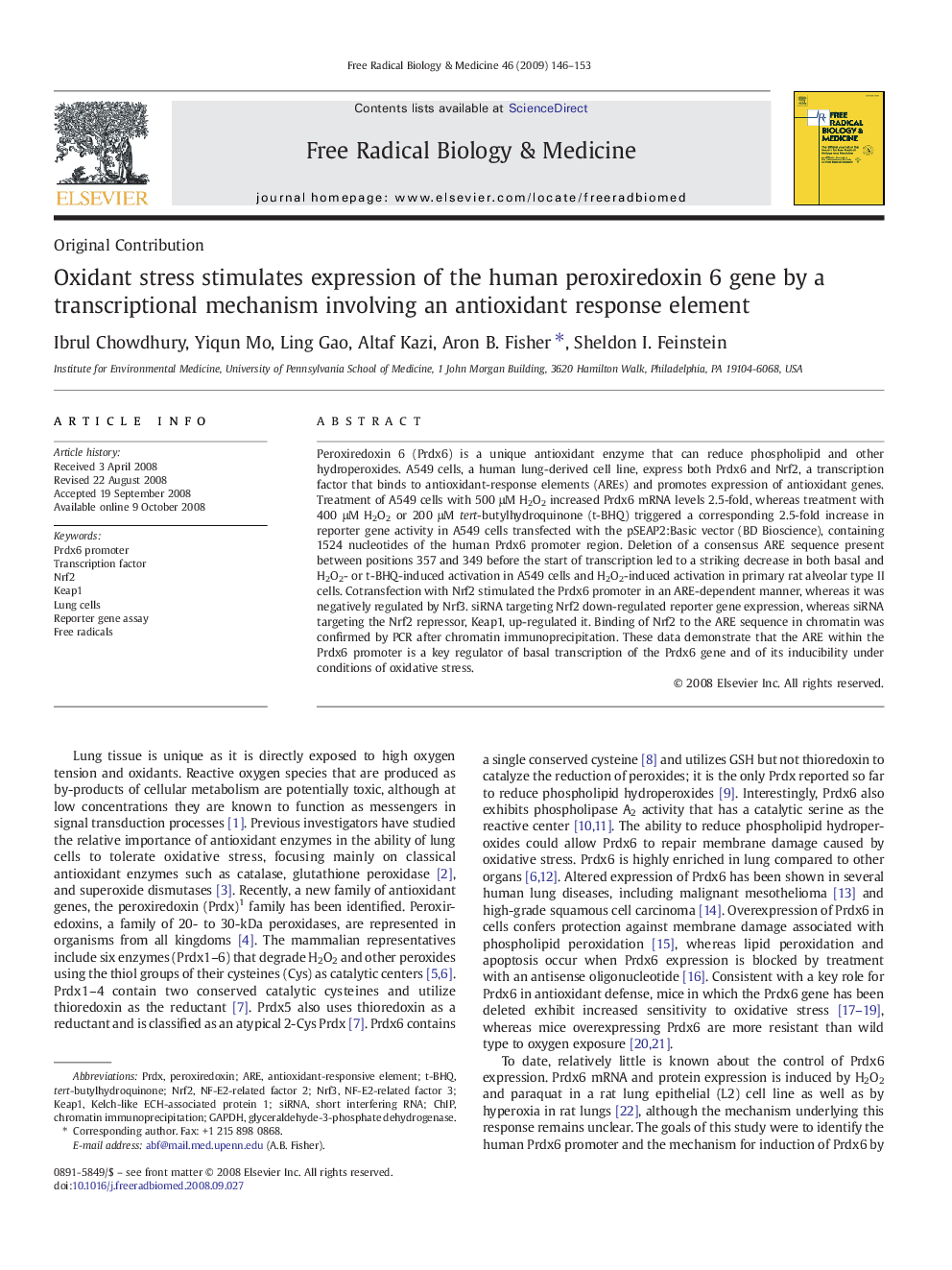| Article ID | Journal | Published Year | Pages | File Type |
|---|---|---|---|---|
| 1910458 | Free Radical Biology and Medicine | 2009 | 8 Pages |
Peroxiredoxin 6 (Prdx6) is a unique antioxidant enzyme that can reduce phospholipid and other hydroperoxides. A549 cells, a human lung-derived cell line, express both Prdx6 and Nrf2, a transcription factor that binds to antioxidant-response elements (AREs) and promotes expression of antioxidant genes. Treatment of A549 cells with 500 μM H2O2 increased Prdx6 mRNA levels 2.5-fold, whereas treatment with 400 μM H2O2 or 200 μM tert-butylhydroquinone (t-BHQ) triggered a corresponding 2.5-fold increase in reporter gene activity in A549 cells transfected with the pSEAP2:Basic vector (BD Bioscience), containing 1524 nucleotides of the human Prdx6 promoter region. Deletion of a consensus ARE sequence present between positions 357 and 349 before the start of transcription led to a striking decrease in both basal and H2O2- or t-BHQ-induced activation in A549 cells and H2O2-induced activation in primary rat alveolar type II cells. Cotransfection with Nrf2 stimulated the Prdx6 promoter in an ARE-dependent manner, whereas it was negatively regulated by Nrf3. siRNA targeting Nrf2 down-regulated reporter gene expression, whereas siRNA targeting the Nrf2 repressor, Keap1, up-regulated it. Binding of Nrf2 to the ARE sequence in chromatin was confirmed by PCR after chromatin immunoprecipitation. These data demonstrate that the ARE within the Prdx6 promoter is a key regulator of basal transcription of the Prdx6 gene and of its inducibility under conditions of oxidative stress.
